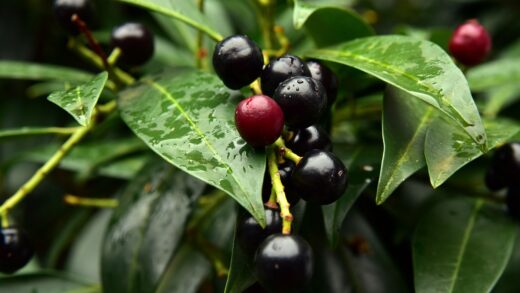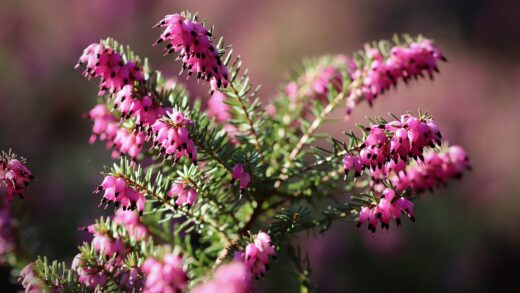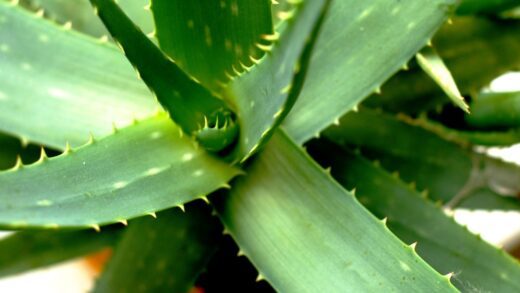The single most important environmental factor influencing the health, vigor, and flowering of pineapple sage is an abundance of sunlight. This plant is a quintessential sun-lover, and its requirement for bright, direct light is non-negotiable for achieving optimal growth. In its native habitat in the highlands of Mexico, it thrives in open, sunny clearings. To cultivate it successfully in a garden setting, you must aim to replicate these conditions as closely as possible. Providing at least six to eight hours of direct, unfiltered sunlight per day is the foundational rule for ensuring a robust, fragrant, and floriferous plant. A lack of sufficient light is the most common reason for a pineapple sage to underperform, resulting in weak growth and a disappointing absence of its signature scarlet flowers.
When a pineapple sage is deprived of the intense light it craves, it undergoes a process called etiolation. The plant begins to stretch, producing long, spindly stems with wide gaps between the leaf sets. This is a survival mechanism, as the plant is actively “reaching” for a better light source. While it may grow taller in lower light, this growth is weak and floppy, making the plant prone to breaking in wind or rain. Furthermore, the foliage on a light-deprived plant will be sparse, and the leaves will often be a paler shade of green, indicating a lower concentration of chlorophyll.
The iconic pineapple-like fragrance of the leaves is also directly tied to sunlight exposure. The aromatic compounds and essential oils responsible for this scent are produced in the greatest quantities when the plant is receiving ample solar energy. A plant grown in the shade may have very little scent at all, depriving the gardener of one of its most cherished qualities. The energy derived from intense sunlight is the fuel for all of the plant’s metabolic processes, including the production of these volatile oils.
Most critically, sunlight is the primary trigger for flowering. Pineapple sage is a “short-day” plant, which means it initiates budding in response to the shortening daylight hours of late summer and autumn. However, it must have spent the preceding months accumulating a massive amount of solar energy to have the resources necessary to produce its spectacular floral display. A plant that has been struggling in low light all season simply will not have the stored energy reserves to create flowers, regardless of the changing day length. Therefore, full sun throughout the entire growing season is essential for the grand finale of autumn blooms.
The fundamental need for sunlight
The relationship between pineapple sage and sunlight is a fundamental aspect of its biology, deeply embedded in its photosynthetic processes. Photosynthesis is the mechanism by which plants convert light energy into chemical energy, creating the sugars that fuel their growth and development. The large, broad leaves of pineapple sage are essentially solar collectors, designed to capture as much light as possible. When exposed to full sun, these “factories” work at peak efficiency, producing an abundance of energy for building strong stems, lush foliage, and an extensive root system.
More articles on this topic
This high-energy production is what gives the plant its characteristic vigor and rapid growth rate. In ideal sunny conditions, a small plant can grow into a large, bushy shrub in a single season. This energy surplus is stored within the plant, ready to be deployed for the demanding process of flowering late in the year. Without a surplus, the plant remains in a basic survival mode, allocating its limited energy resources only to essential functions like maintaining a few leaves and stems.
Sunlight also plays a crucial role in the plant’s physical structure and health. Direct sun helps to keep the foliage dry, reducing the incidence of fungal diseases like powdery mildew, which thrive in damp, shady conditions. The ultraviolet (UV) radiation in sunlight can also help to suppress fungal spore germination. Furthermore, the strong growth encouraged by full sun results in sturdier, more robust stems that are better able to support the plant’s large size and withstand environmental stressors like wind.
The intensity of the light is as important as the duration. Pineapple sage prefers the bright, unfiltered light of an open sky. Planting it under the dappled shade of a large tree or on the north side of a building will not provide the intensity it needs. While the plant may survive in these lower-light conditions, it will never truly thrive. It will be a pale imitation of its potential, lacking the dense form, rich fragrance, and vibrant flowers that make it such a desirable garden plant.
The ideal quantity and quality of light
For pineapple sage, the gold standard for light exposure is a location that receives a minimum of six hours of direct sunlight each day. However, more is almost always better. A spot that is sun-drenched from morning until late afternoon will produce the most spectacular results. This ensures that the plant’s photosynthetic engines are running at full capacity for the majority of the day, allowing it to grow quickly and store the vast amounts of energy it needs for its late-season flowering.
More articles on this topic
While “full sun” is the general recommendation, there is a minor exception for gardens in extremely hot, arid climates, such as the low desert. In these specific environments, the afternoon sun can be so intense that it can scorch the leaves and cause the plant to wilt excessively due to heat stress. In such a scenario, a location that provides direct morning sun for at least six hours, followed by some light, filtered shade during the hottest part of the afternoon (typically after 3 p.m.), can be beneficial. This protects the plant from the most punishing rays while still giving it the high quantity of light it needs.
The quality of light also matters. The plant needs a full spectrum of light, which is naturally provided by the sun. This is particularly important for gardeners who may be attempting to grow pineapple sage indoors. A simple windowsill, even a south-facing one, may not provide enough light intensity or duration, especially during the shorter days of winter. This is why indoor plants often become leggy and weak. To successfully grow a healthy pineapple sage indoors, supplemental lighting in the form of a full-spectrum grow light is almost always necessary.
It is also important to consider how the light in your garden changes throughout the year. A spot that is in full sun during the high-angled sun of mid-summer might become partially shaded in the spring or autumn when the sun is lower in the sky. When selecting a permanent spot for your pineapple sage, observe the light patterns over a full day and consider the seasonal shifts. This foresight will ensure that the plant receives the consistent, high-quality light it needs throughout its entire active growing period.
Recognizing symptoms of inadequate light
The signs of insufficient light in a pineapple sage are often clear and progressive, making it possible to diagnose the problem and take corrective action. The most immediate and noticeable symptom is etiolation, or legginess. The stems will become elongated and thin, with unusually large distances between the leaf nodes. This is the plant’s desperate attempt to stretch and find a better light source. The overall form of the plant will be sparse and open, rather than dense and bushy.
The foliage itself will also provide distinct clues. The leaves will likely be smaller than those on a plant grown in full sun. Their color will also be affected, often appearing as a pale, washed-out green instead of a rich, vibrant hue. This is because the plant is producing less chlorophyll in response to the lower light levels. A severe lack of light can even cause the lower leaves to turn yellow and drop off as the plant sacrifices its older foliage to support the new growth at the tips that is still seeking light.
Perhaps the most disappointing symptom for any gardener is the failure to bloom. A pineapple sage that has not received enough sunlight throughout the growing season will almost certainly not produce its characteristic red flowers in the autumn. It simply will not have accumulated the necessary energy reserves to undertake such a demanding task. If your plant is large and leafy but produces no flowers, a lack of sun is the most likely culprit, assuming you have also followed proper fertilization practices and ceased feeding in late summer.
In addition to these primary symptoms, a plant in low light is often more susceptible to secondary problems. The weakened, spindly stems are more likely to be damaged by wind or to flop over under their own weight. The reduced air circulation and damp conditions of a shady spot also make the plant a prime target for fungal diseases, particularly powdery mildew. If you observe these symptoms, the only effective remedy is to move the plant to a sunnier location in your garden.
Light considerations for indoor cultivation
Growing pineapple sage indoors presents a significant challenge primarily due to light limitations. Standard indoor lighting is far from adequate, and even the brightest windowsill in a home receives significantly less light energy than an outdoor spot in full sun. This is because window glass filters some of the light spectrum, and the angle and duration of direct sun are limited. A plant placed on a windowsill will often grow lopsided, leaning heavily towards the glass, and will almost certainly become leggy.
To successfully maintain a pineapple sage indoors, especially when overwintering it, supplemental artificial lighting is highly recommended. A simple fluorescent shop light fixture fitted with one cool-white and one warm-white bulb, or a dedicated full-spectrum LED grow light, can provide the necessary intensity and quality of light. The light source should be positioned close to the plant, typically just 15-30 centimeters above the foliage, and should be kept on for 14 to 16 hours per day to compensate for the lower intensity compared to the sun.
The location of the plant, even with supplemental lighting, is still important. Placing it near the sunniest window you have (typically south-facing) will allow it to benefit from any natural sunlight it can get, with the grow light providing the additional energy it needs. Regularly rotating the pot every few days will help to ensure that all sides of the plant receive even light exposure, which promotes a more balanced and upright growth habit rather than a one-sided lean.
It is important to manage expectations for an indoor pineapple sage. Even with good supplemental lighting, it is unlikely to grow with the same vigor or reach the same size as an outdoor plant. The primary goal of indoor cultivation, particularly during winter, is often maintenance rather than active growth. The aim is to keep the plant healthy and alive until it can be moved back outdoors in the spring. Providing adequate light is the most critical factor in achieving this goal and preventing the plant from slowly deteriorating over the winter months.


















